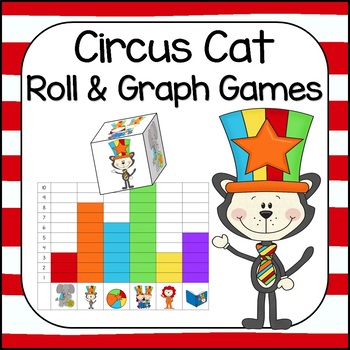Circus Cat Math Graphing Activity
- PDF
Description
Looking for a fun March math center? These Circus Cat images make graphing fun! Your students will love rolling the cube and graphing the images and won't even realize they're learning about data analysis! This is a great independent math activity or a fun partner game. The data changes every time the game is played, so students have unlimited opportunities to practice data collection and analysis!
Included:
Circus Cat Dice Template - simply print, cut and tape. Alternate versions are available if you'd prefer to use wooden cubes or a picture cube.
Graph: students graph each roll of the dice, getting practice with collecting data! Color & b&w options included.
Comparison Sheet: students answer questions about more than, less than and equal too. Color & b&w options included.
Addition Sheet: students use their graph to create addition sentences. Color & b&w options included.
You Might Also Like:
• March Sensory Bin Activities
• Circus Cat Roll & Graph Activity
• Circus Cat Themed Roll & Cover Addition & Subtraction Games!





